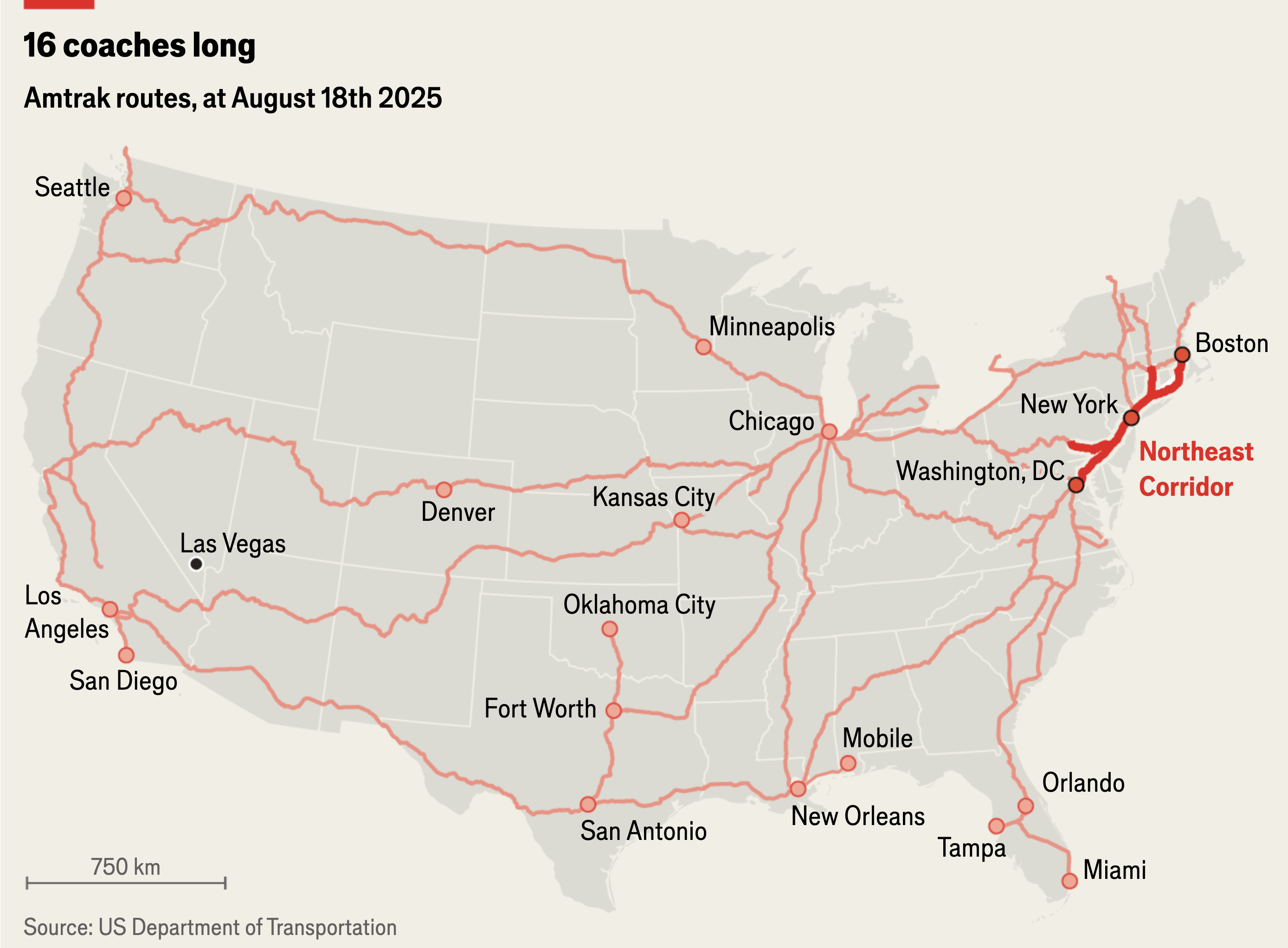Amtrak Rail Routes Map August 2025


Marcus Rodriguez
Historical Geography Expert
Marcus Rodriguez specializes in historical cartography and geographic data analysis. With a background in both history and geography, he brings unique...
Geographic Analysis
What This Map Shows
The "Amtrak Rail Routes Map (August 2025)" provides a comprehensive overview of the rail network operated by Amtrak across the United States. This visualization highlights the routes connecting major cities, regional areas, and picturesque landscapes that Amtrak serves. With a focus on long-distance and regional trains, this map showcases both the extensive and intricate rail system that has become a vital part of America’s transportation infrastructure.
Transitioning from the visualization, let’s delve into the role of railroads in the United States, particularly focusing on Amtrak's significance in connecting communities and facilitating travel across vast distances.
Deep Dive into Amtrak's Rail Network
Amtrak, officially known as the National Railroad Passenger Corporation, began operations in 1971, stepping in to preserve intercity rail travel in the U.S. as private rail companies shifted focus to freight services. Ever wondered how this network evolved? Today, Amtrak operates over 30 routes spanning 21,000 miles of track, linking over 500 stations in 46 states, and serving nearly 32 million passengers annually.
Interestingly, Amtrak's infrastructure is crucial for both urban and rural connectivity. The map reveals major lines such as the Northeast Regional, which connects cities from Boston to Washington, D.C., facilitating not just commuter travel but also tourism and business interactions. The California Zephyr is another highlight, offering breathtaking views of the Rocky Mountains while connecting Chicago to San Francisco.
Moreover, Amtrak's energy efficiency is noteworthy. Trains produce significantly fewer carbon emissions per passenger mile compared to cars and planes, making them an environmentally friendly choice for travelers. In fact, Amtrak reports that every passenger train can take approximately 200 cars off the road, which speaks volumes about its potential role in reducing traffic congestion and promoting sustainable travel practices.
The rail network also plays a vital role in economic terms. Amtrak contributes approximately $1.5 billion to the U.S. economy every year, supporting jobs not only within the organization but also in communities along its routes. As cities continue to grow, the ability to travel efficiently becomes increasingly important, especially in regions experiencing population surges.
Regional Analysis
Diving into the regional specifics, the map provides a clear picture of how Amtrak's services are distributed across the country. In the Northeast, where the train system is most developed, the frequency and speed of trains cater to both commuters and leisure travelers. For instance, the Acela Express, operating between Boston and Washington, D.C., is the fastest train in the U.S., traveling at speeds of up to 150 mph.
In contrast, the Western U.S. presents a different picture. The routes, such as the Coast Starlight and the Southwest Chief, while scenic and vital for tourism, often cover larger distances with fewer stops, reflecting the more dispersed population in these areas. Interestingly, states like California and Texas have been advocating for expanded rail services, highlighting a growing interest in rail travel as a viable alternative to road travel.
In the Midwest, the Amtrak routes connect key urban centers, but the service frequency can be less robust compared to the Northeast. For example, the Empire Builder route connects Chicago with the northern states and illustrates how rail can bridge gaps where air travel is less practical.
Significance and Impact
Understanding the Amtrak rail network's significance extends beyond mere transportation. As cities evolve and populations shift, the demand for efficient transport solutions is paramount. Rail travel not only facilitates ease of movement but also plays a crucial role in economic development, tourism, and environmental sustainability. The expansion of rail services, particularly in underserved regions, could greatly enhance access to major cities and reduce dependency on automobiles.
Looking forward, projections for the future of Amtrak suggest a continued push towards modernization and expansion. With the integration of technology and improvements in service, there are plans to enhance the user experience, such as real-time tracking and Wi-Fi availability. As climate concerns escalate, investing in rail infrastructure presents an opportunity for mitigating environmental impact while also meeting the rising demand for accessible travel options.
In conclusion, the Amtrak Rail Routes Map (August 2025) tells a story of connectivity — one that interlinks cities, fosters economic growth, and champions sustainable travel. As we look to the future, the evolution of this network will be pivotal in shaping America’s transportation landscape, making rail travel an increasingly attractive choice for millions.
Visualization Details
- Published
- September 22, 2025
- Views
- 112
Comments
Loading comments...